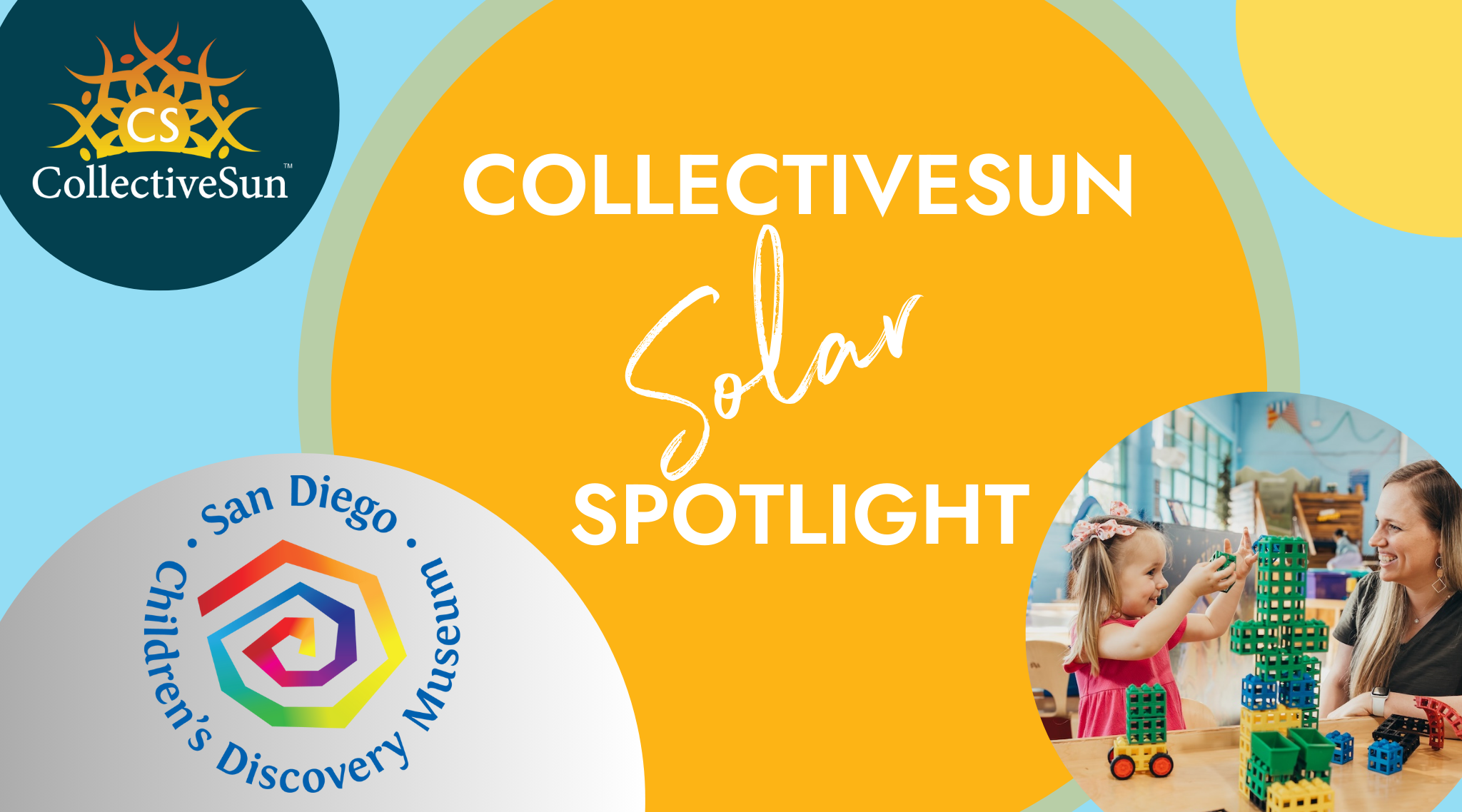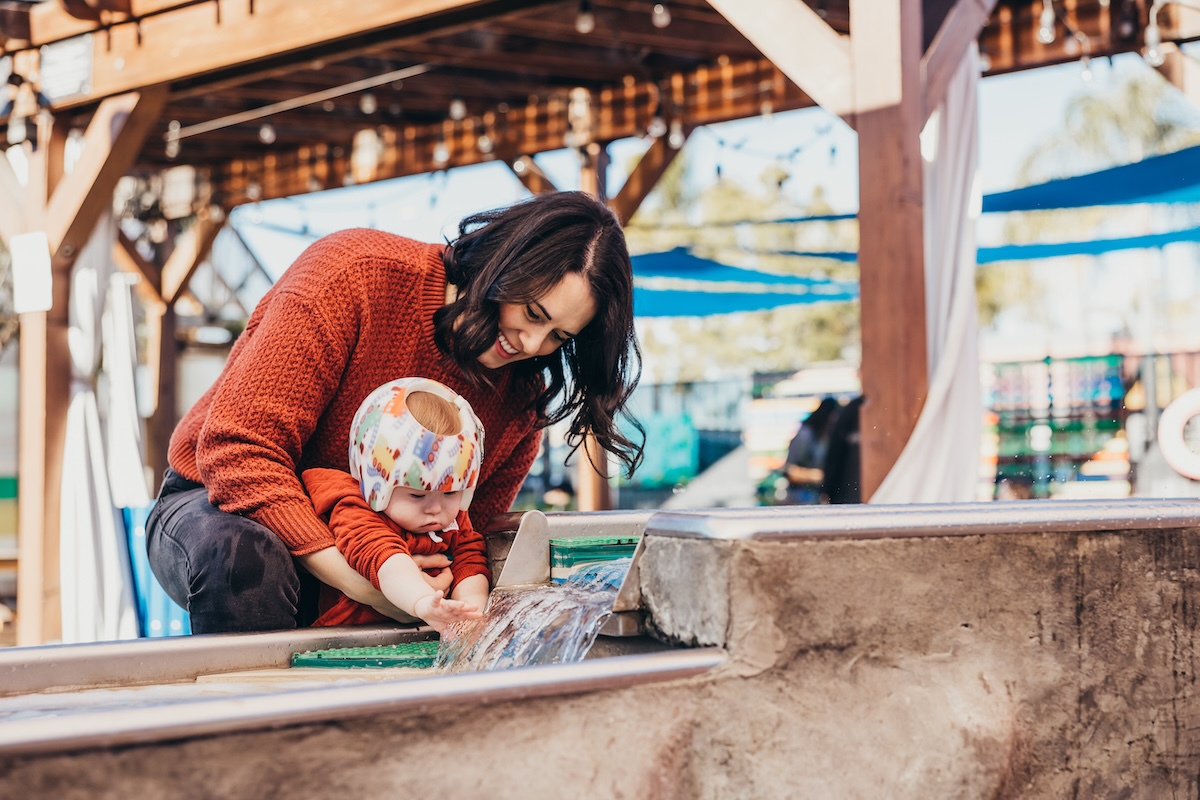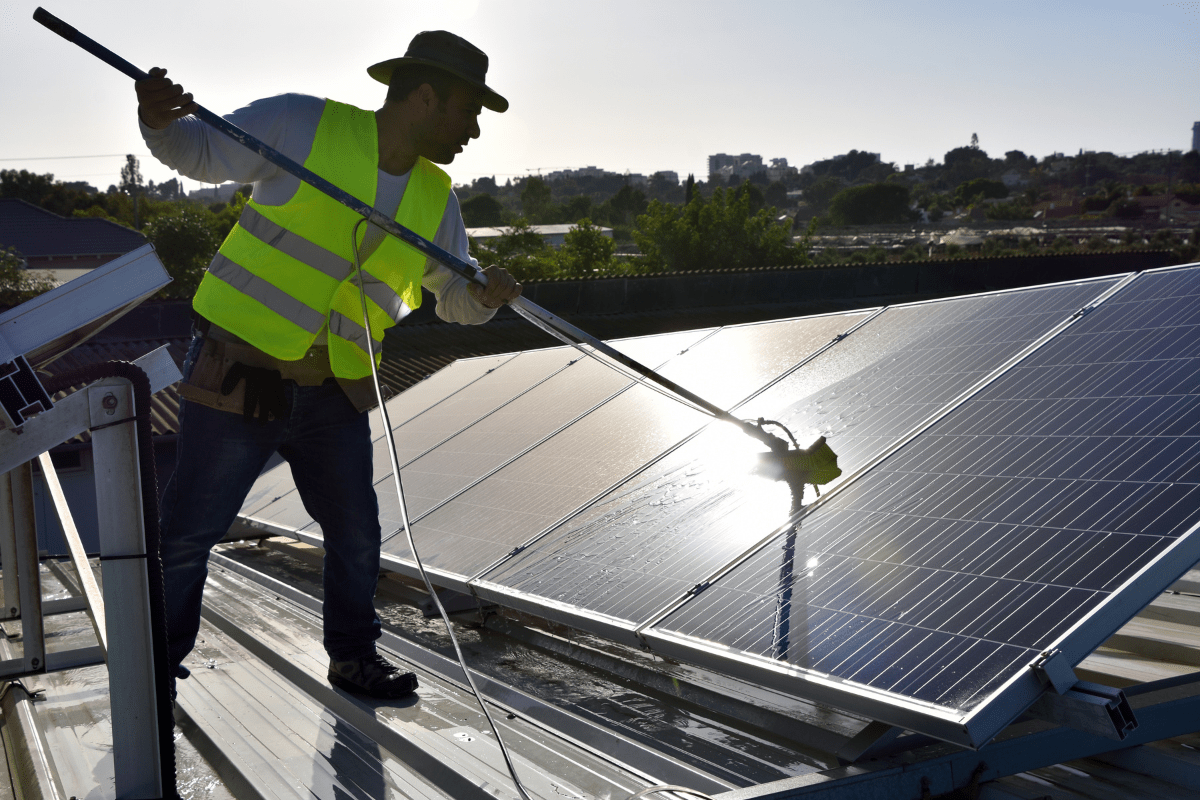
SOLAR SPOTLIGHT: San Diego Children’s Discovery Museum
| October 11, 2024
San Diego Children’s Discovery Museum sparks a love of learning so ALL children can discover their wildest dreams. Established in 2000, the museum offers play and educational experiences for children ages 0-10, focusing on social-emotional learning (SEL) and STREAM (science, technology, reading, engineering, arts, and math). The museum aims to support children who are most impacted by early childhood educational disparities during the earliest years when it matters most.
Now, the museum’s impact is being supported by a new solar system on its roof. Christina Piranio, CEO of the museum, told us about the organization and their solar project.

The museum’s wide-ranging programs and services
San Diego Children’s Discovery Museum provides a comprehensive range of services and programs. These include 13,500 square feet of indoor and outdoor purposeful play areas and exhibits, free daily educator-led experiences, a Mobile Children’s Museum, special STREAM events, sensory-friendly hours, after-school/summer camps, and STEM activity kits.

“As an early education provider, the museum wants to ensure access for all to the early education opportunities that are so critical to children’s growth and development,” says Piranio. To that end, the organization removes cost barriers through its Access for All Initiative. Visitors with EBT / SNAP or CalFresh / WIC cards receive discounted admission of $2 per person, compared to the usual ticket price of $14 per person. Discounted attendance has risen recently to 40% of museum visitors — representing a 30% increase in the last few years in the number of families utilizing this critical program.
San Diego Children’s Discovery Museum is constantly evolving and improving to consistently provide hands-on exhibits to children and families, while ensuring that those exhibits are up to date and relevant.
“We’re ensuring that children are accessing the kinds of activities and learning opportunities that may not be possible in a school setting,” says Piranio. “That’s really what makes us unique. This kind of open-ended, hands-on learning is so critical for children.”
In addition to ensuring they reach children at an early age, the museum is working hard to be a resource for the community. That includes extending that resource into the community through their unique mobile exhibits, carried out in partnerships with schools and libraries. A team of two educators takes exhibits on the road, presenting learning opportunities to children from preschool age to fifth grade. “This way, we bring the museum to children who may not be able to access it otherwise,” says Piranio.

Combining solar savings and environmental stewardship
As part of the Museum’s strategic plan, the organization wanted to build on the museum’s community focus and become a greener organization. The Museum sought out a partner who could help finance the project. This search led to CollectiveSun.
The Museum’s experience serves as a reminder to nonprofits going solar to be patient with the process. In the case of the museum, it took some time just to get the necessary permits. While permit time will vary depending on your jurisdiction and other factors, it’s good to be prepared for steps in the solar process that can take time.
The results are worth the wait. The museum is now enjoying a new 29.9 kW solar system, installed by GRID Alternatives. It produces 100% of the museum’s electricity use and represents an investment that will hedge against rising electricity prices.

Savings from the museum’s solar project will be reinvested back into the organization’s programs to ensure that the exhibits and experiences remain exciting and updated for all guests to enjoy.
“Environmental conservation and stewardship are part of our educational values here at San Diego Children’s Discovery Museum,” says Piranio. “Adding solar helps us to live our values and contribute to the environmental stewardship that we teach to children.”
Learn More
To learn about San Diego Children’s Discovery Museum, check out their website at https://sdcdm.org. To learn more about the solar process or any aspect of what the museum is doing, contact Christina Piranio at ChristinaP@sdcdm.org.
This loan was made possible by the generous participation of the BQuest Foundation. Click here for more information about the SunForAll program.






